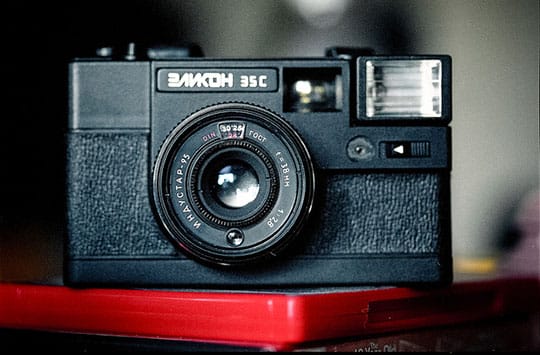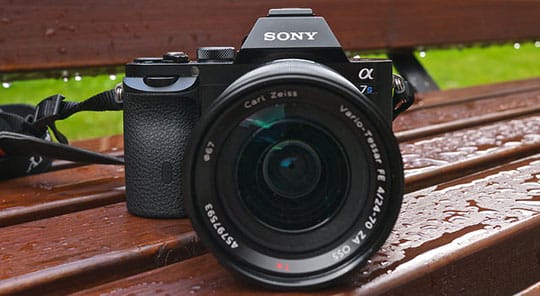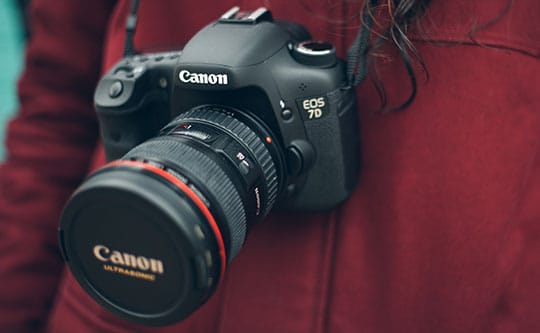Don’t think of buying a camera as a complicated process that requires from you to become an expert in the field. I, however, like to call it an exciting journey, on which you’ll be able to understand all those camera specifications that look so unclear on first sight. So, if you have decided to buy one of these amazing devices, I have some great news! This digital camera buying guide will teach you everything there is to know about camera types, their features and prices. Next time you look at some digital camera tech specs, you’ll know whether it is the right fit for you or not!
Camera Types
The first thing I want to talk about is camera types and their main advantages. If you go to Wikipedia, you’ll find out that there are more than 30 camera types. But I will focus on the most common ones: DSLR, Point-and-Shoots and mirrorless cameras. I guess we can throw camcorders into the mix, but as they are geared towards more serious stuff, let’s leave them for another time.
1. DSLR Cameras

DSLR stands for Digital Single Lens Reflex. And if you have ever seen some big and expensive digital camera – it’s either camcorder or DSLR. They are composed of two main parts: the body of the camera and the lens. The lenses can be changed depending on your needs. Also, there is a mirror on the camera called viewfinder that enables you to look through the lens as you’re taking pictures. This gives you a pretty clear idea of how the final image will look.
DSLR cameras are superior when it comes to flexibility, image quality, recording in low-light conditions and manual controls. The lens plays a big part in the quality of the image, and if you decide to buy a DSLR camera, you won’t have to worry about finding high-quality lenses. You’ll have plenty options to choose from! DSLR cameras are for people who plan to get into photography professionally.
2. Point-and-Shoots

One of the coolest things about Point-and-Shoot cameras is their size. Put simply, they are the ideal travel companions! With permanently attached and retractable lenses, these cameras are so small and portable that they can easily fit into your pocket. Trust me, this is not the case with some DSLR or mirrorless cameras.
By now, Point-and-Shoot cameras look ideal. But what’s the catch? Although these cameras are great for beginners, they are too limiting for professionals. Starting from the non-interchangeable lenses, all the way to lack of image quality, manual controls and lower response time.
On the bright side, Point-and-Shoot cameras are generally the most affordable ones when compared to other types.
3. Mirrorless cameras

You can think of mirrorless cameras as the ultimate alternative to DSLR cameras in price and performance. They are also the middle ground for ergonomic attributes like weight and size, between Point-and-Shoot and DSLR cameras. These cameras come with interchangeable lenses – which add-on flexibility for taking pictures or shooting videos.
In recent years, mirrorless cameras have come close in options and image quality when compared to DSLR cameras. To some extent, they have some of the same features. But, in areas like low-light shooting, auto focus and sensors, mirrorless cameras are still behind. Still, a great choice for people that plan to get involved deeper with photography.
Important Digital Camera Features
Now that you’re familiar with some popular camera types, let’s go over the most important features of digital cameras. We’re not going to get technical here. Instead, I’m just going to point out what those features you see in product descriptions represent.
1. Manual Controls
When you use a camera out of the box, you’re shooting videos and images in automatic mode – which automatically sets the ISO, shutter speed and lens aperture. But if you want to take your photography to the next level, you need to start playing with the manual mode. This will allow you to have full control over the image. DSLR and mirrorless cameras usually have manual mode, while point-and-shoot don’t. If you plan to get serious about photography, you’re going to need that manual mode sooner or later. So choose your camera wisely!
2. Camera Lens
Lens are composed of two parts. The first part is the angle of view, or also known as the focal length. The Bigger angle of view allows you to capture more objects in the frame. It’s simple as that! The second one is called aperture, and it’s responsible for handling how much light the lens lets in. Lens play an important role in image quality.
3. Camera Sensors
Camera sensors are also directly related to image quality. The bigger the sensor is, the better image quality the camera will produce. But on the downside, cameras with bigger sensors are more expensive.
4. ISO Sensitivity
This one is closely related to using the camera for shooting in low-light conditions. ISO handles how sensitive the camera sensor is to light. That’s why cameras with higher ISO rating will perform better in low-light environments.
5. Autofocus
Camera’s autofocus system is important as well. It helps you to draw viewer’s attention to special parts of the video or the image.
6. Battery Life
If you’re always on the go, it’s important that your camera holds the battery. This especially matters for people who travel a lot.
7. Camera Resolution
The resolution of a camera is measured in megapixels (MP) – where 1 MP equals 1 million pixels. There is a big myth about megapixels which started way back. Without getting into it, I’d like to point out that you don’t need a camera with a million megapixels to create images with great quality. So don’t get distracted by how many MP one camera has! Remember what I said about sensors and lens earlier.
8. Video Recording Quality
This is something you should really keep an eye on. Every decent camera supports, at least, 720p video. Nowadays, 1080p video is the standard, and 4K is the future (or maybe the near future will be more appropriate). It mainly depends on your own preference and audience, but be sure to check the video recording quality before you decide on a camera.
Digital Camera Buying Guide: Prices in 2016

Now that we have everything else covered up, it’s time to talk numbers. I’ll give you a rough estimate of what you can expect to spend on a digital camera – depending on its type. Here are some figures:
- Point-and-Shoot cameras: from $90 to $900
- Mirrorless cameras: from $350 to $3500
- DSLR cameras: from $450 to $8000
This article is written by Stefan Ivanovski. He is a technology writer and WordPress developer. He is a graduate, with degree in Business Informatics (BI). Stefan enjoys writing about technology, online marketing and SEO, big supporter of open-source, and GNU Linux enthusiast. You can find him at Valoso, a freelance video service..





